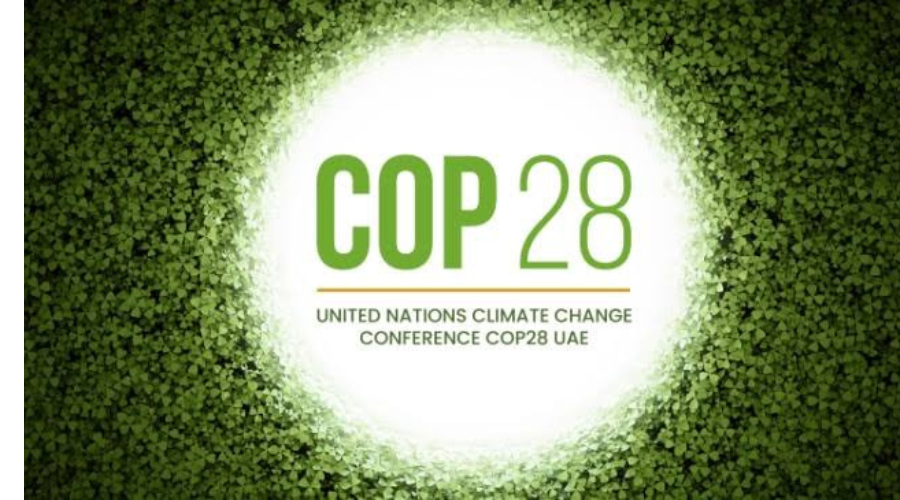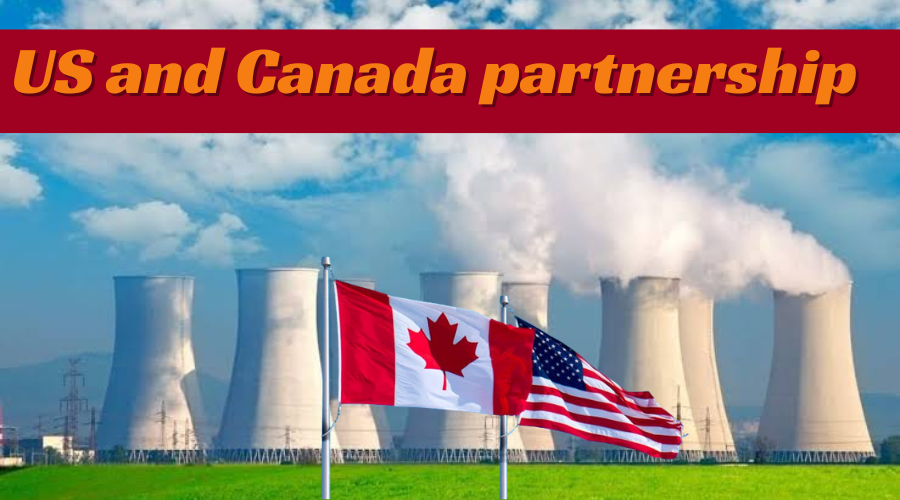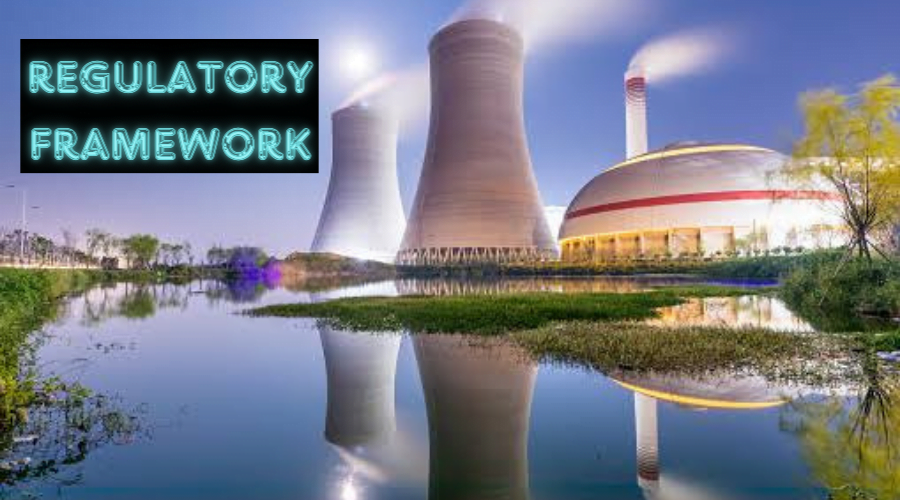Sapporo 5 Nations Invest $4.2 Billion in Global Nuclear Supply Chain Development
Introduction
In a significant stride towards advancing the global nuclear supply chain, the United States, Canada, France, Japan, and the United Kingdom—collectively named Sapporo 5—have unveiled plans to invest a substantial $4.2 billion. This strategic move aims to enhance uranium enrichment and conversion capacity until 2027, fostering a secure and resilient global uranium market. The announcement was made during the Net Zero Nuclear Summit at COP28 in Dubai, marking a historic moment in global efforts towards sustainable energy solutions.
Key Announcement at COP28 Net Zero Nuclear Summit


The declaration took center stage at the Net Zero Nuclear Summit, held as part of COP28 in Dubai, United Arab Emirates. This platform showcased the nations’ commitment to not only meeting energy demands but doing so in an environmentally conscious manner through advancements in nuclear technology.
Sapporo 5 Investment Overview


The planned investments are geared towards improving uranium enrichment and conversion capacity over the next six years. This initiative is poised not only to fortify the global nuclear supply chain but also to establish a secure and resilient uranium market worldwide.
The roots of this alliance can be traced back to the historical collaborations that have shaped the nuclear landscape. Over the years, nations with advanced nuclear capabilities have recognized the mutual benefits of working together to ensure the peaceful use of nuclear energy.
Significance of Nuclear Energy
Nuclear energy plays a crucial role in addressing the world’s growing energy needs while reducing carbon emissions. The global demand for clean and sustainable energy sources has heightened the importance of establishing a secure and efficient nuclear supply chain.
US and Canada Partnership


The partnership between the United States and Canada is a cornerstone of this collaborative effort. Both nations bring their technological prowess and resources to the table, fostering innovation and ensuring the stability of the global nuclear supply chain.
France’s Role in the Nuclear Supply Chain
France, with its extensive experience in nuclear technology, plays a vital role in bolstering the international nuclear supply chain. The French commitment to research and development contributes significantly to advancements in nuclear capabilities worldwide.
Japan’s Involvement


Japan, known for its technological advancements, has become an integral part of this global initiative. The country’s expertise in nuclear technology and its commitment to safety standards enhance the overall resilience of the nuclear supply chain.
UK’s Nuclear Contribution
The United Kingdom’s active involvement underscores its dedication to supporting and advancing the global nuclear supply chain. Recent partnerships and developments within the UK further solidify its position as a key player in the international nuclear arena.
Challenges and Solutions
While collaboration is essential, challenges inevitably arise. Maintaining a secure and efficient global nuclear supply chain requires addressing issues such as regulatory differences, technological disparities, and geopolitical considerations. Solutions must be sought through diplomatic means and technological innovation.
Environmental Impact
Critics often highlight concerns about the environmental impact of nuclear energy. However, it’s crucial to emphasize that responsible practices in the nuclear supply chain can mitigate these concerns. Implementing stringent safety measures and embracing sustainable technologies are vital steps in ensuring the eco-friendliness of nuclear energy.
Nuclear Energy in Future


The Sapporo 5 nations, collectively responsible for half of the world’s capacity for uranium conversion and production enrichment, acknowledge the critical need for resilient supply chains. They are determined to secure safe and reliable nuclear technologies while simultaneously establishing a global uranium supply market free from Russian influence.
Looking ahead, the global nuclear supply chain holds promising prospects. Emerging technologies, such as advanced reactors and fuel cycles, present opportunities for growth and increased efficiency. Continued international collaboration will be key to realizing these advancements.
Public Perception
Addressing public misconceptions about nuclear energy is essential for garnering widespread support. Educational initiatives and transparent communication about the safety measures in place will contribute to a more informed and accepting public.
Regulatory Framework


International regulations play a pivotal role in ensuring the safe and responsible use of nuclear energy. Standardization of practices and adherence to stringent safety protocols are fundamental aspects of a robust regulatory framework.
Case Studies
Examining successful case studies of international collaborations in the nuclear industry provides valuable insights. Learning from past experiences, identifying best practices, and understanding challenges overcome by other nations contribute to the continuous improvement of global cooperation.
Economic Implications
Beyond the scientific and technological aspects, the global nuclear supply chain has significant economic implications. Job creation, technological innovation, and economic benefits for participating countries underscore the multifaceted advantages of a thriving nuclear industry.
Investment Breakdown
Here’s a detailed breakdown of the $4.2 billion investment:
| Country | Investment Amount (USD) |
|---|---|
| USA | $1.2 billion |
| Canada | $800 million |
| France | $1 billion |
| Japan | $1.5 billion |
| UK | $700 million |
Encouraging Public-Private Collaboration
Under the collaborative banner of Sapporo 5, these G7 nations aim to stimulate public-private investments in uranium enrichment production capacity. This move seeks to strengthen the symbiotic relationship between governmental bodies and private entities, ensuring the sustainability and growth of the nuclear industry.
Global Commitment to Nuclear Expansion
This landmark announcement follows a recent pledge by 22 countries, including Canada, Finland, Moldova, the Netherlands, Sweden, and Ukraine, to triple nuclear capacity by 2050. The collective commitment underscores the growing recognition of nuclear energy as a pivotal player in achieving global net-zero greenhouse gas emissions and aligning with the target of limiting global temperature increases to 1.5°C.
Key Objectives
- Develop resilient supply chains, including fuel, ensuring the longevity of the nuclear industry.
- Facilitate government or private-led investment to enhance uranium conversion and enrichment capabilities.
- Advance efforts to secure reliable suppliers of nuclear fuel to guarantee a stable and secure source.
Long-Term Strategy for Confidence in the Industry
The overarching goal of Sapporo 5 is to construct a comprehensive long-term supply strategy that instills confidence in the nuclear industry. By actively promoting investments, the nations are taking critical steps towards shaping the future of sustainable and secure nuclear energy.
Frequently Asked Questions (FAQs) on Global Nuclear Supply Chain Development in the US, Canada, France, Japan, and the UK
What is the global nuclear supply chain?
The global nuclear supply chain refers to the interconnected network of industries and organizations involved in the development, production, and maintenance of nuclear technologies, including reactors, fuel, and related infrastructure.
Why is nuclear energy important for these countries?
Nuclear energy plays a crucial role in these countries’ energy portfolios, providing a stable and low-carbon source of electricity. It contributes to energy security, reduces dependence on fossil fuels, and helps address climate change concerns.
How do the US, Canada, France, Japan, and the UK contribute to the global nuclear supply chain?
These countries are key players in the nuclear industry, involved in various aspects of the supply chain, including reactor design, fuel fabrication, and the development of advanced nuclear technologies. They also contribute expertise in research, development, and international collaborations.
What are the challenges in developing the global nuclear supply chain?
Challenges include regulatory complexities, public perception, cost concerns, and geopolitical factors. Harmonizing international standards and ensuring the secure and peaceful use of nuclear technology are ongoing challenges.
How do these countries address safety concerns associated with nuclear energy?
Safety is a top priority, and these countries have stringent regulatory frameworks, safety protocols, and international cooperation mechanisms in place to ensure the safe operation of nuclear facilities and the handling of nuclear materials.
What initiatives are in place to promote international collaboration in the nuclear sector?
These countries actively participate in international forums and organizations such as the International Atomic Energy Agency (IAEA) to promote cooperation, share knowledge, and establish common standards for the peaceful use of nuclear energy.
How do these nations manage nuclear waste from their facilities?
Each country has its approach to managing nuclear waste, including storage, reprocessing, and disposal solutions. Ongoing research focuses on developing advanced waste management technologies to address long-term environmental concerns.
What role does innovation play in the development of the nuclear supply chain?
Innovation is crucial for advancing nuclear technologies, improving efficiency, and addressing safety and environmental concerns. These countries invest in research and development to drive innovation in reactor designs, fuel cycles, and waste management.
How does the global nuclear supply chain contribute to non-proliferation efforts?
The countries involved in the global nuclear supply chain are committed to non-proliferation efforts. They work collaboratively to implement safeguards, export controls, and international agreements to prevent the misuse of nuclear technology for weapons purposes.
How can the public stay informed about developments in the global nuclear supply chain?
The public can stay informed through official government sources, industry publications, and participating in public consultations. Additionally, international organizations like the IAEA provide valuable information on nuclear energy and its global developments.
What is the objective of the $4.2 billion investment by Sapporo 5 nations?
The investment aims to enhance uranium enrichment and conversion capacity, fostering a secure and resilient global uranium market.
Which countries make up the Sapporo 5 nations?
The Sapporo 5 nations include the United States, Canada, France, Japan, and the United Kingdom.
How does the investment breakdown vary among the Sapporo 5 nations?
The investment is distributed as follows: USA ($1.2 billion), Canada ($800 million), France ($1 billion), Japan ($1.5 billion), and the UK ($700 million).
What recent pledge related to nuclear capacity expansion is mentioned in the article?
Twenty-two countries, including Canada, Finland, Moldova, the Netherlands, Sweden, and Ukraine, pledged to triple nuclear capacity by 2050.
What are the key objectives of Sapporo 5’s investment in the global nuclear supply chain?
The key objectives include developing resilient supply chains, facilitating investment in uranium conversion and enrichment, and securing reliable suppliers of nuclear fuel for a stable and secure source.
Conclusion
The $4.2 billion investment by the Sapporo 5 nations stands as a testament to their collective commitment to advancing the global nuclear supply chain. As these nations focus on enhancing uranium enrichment and conversion capacities, their collaborative efforts not only fortify the foundation of the nuclear industry but also position it as a pivotal player in achieving global climate goals. This historic initiative marks a crucial step towards a secure and resilient future for nuclear energy.


TotalInfo4U: Your Ultimate Source for Comprehensive Knowledge

